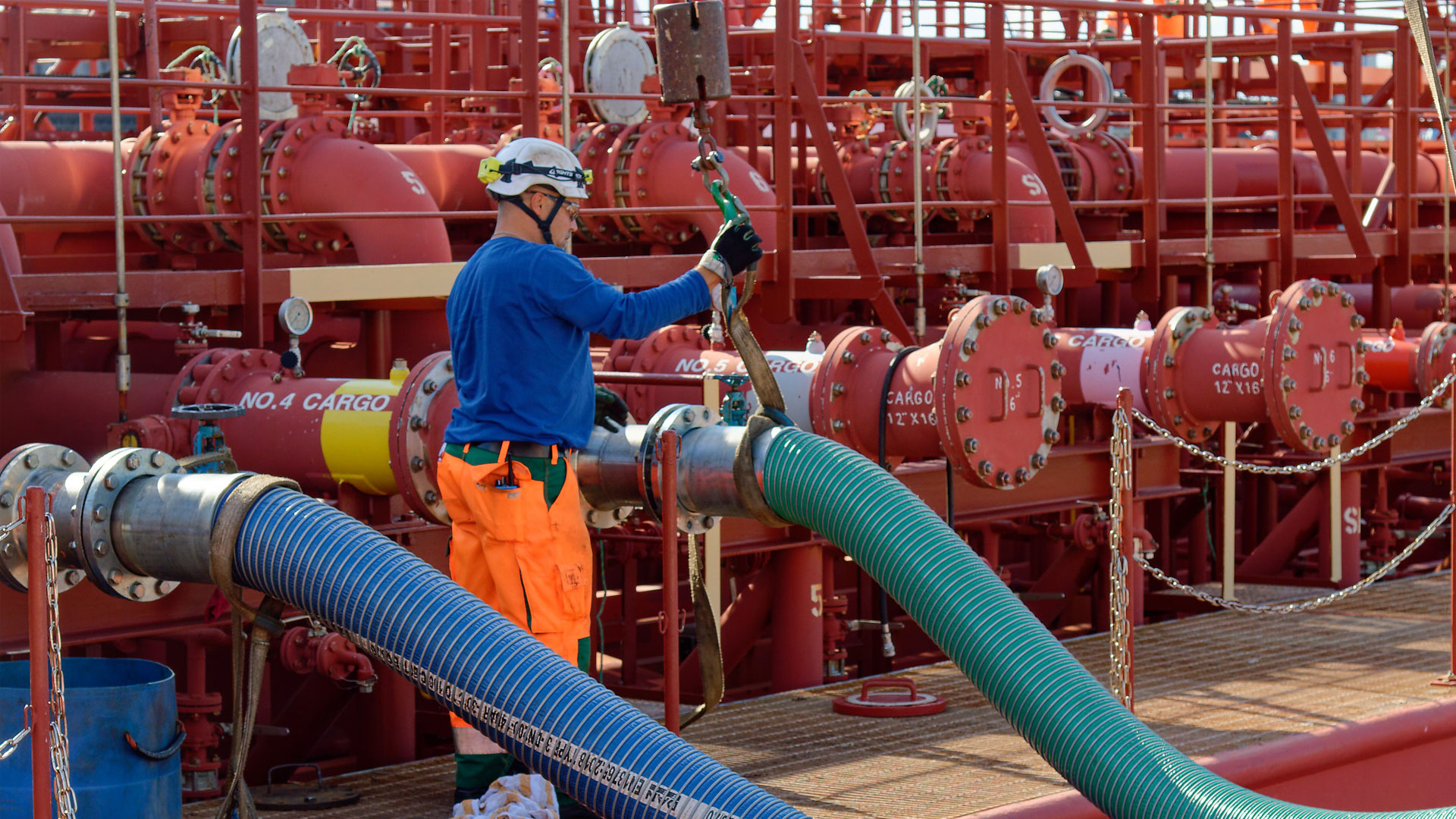A helping hand towards better processes
At HHM – Port of Hamburg Marketing, our Project Department is engaged in European projects that support further development ...

If you wish to implement projects, then a determination to discover something new is absolutely essential. The aim should always be to embody the lessons learned in everyday practice. The CoboTank research project, for example, addresses automated solutions for handling LNG in German inland ports. Until now, this area has been typified by the strenuous manual and physical work required. CoboTank aims to develop a partly automated cobot and a fully automated robot. Deploying a cobot should enhance both process and work safety. Where possible, the robot should be automating the loading process.
Cobotank was launched last year under the supervision of oil trader Garant. The project consortium is complemented by Deymann Tankrode Logistics, DST – Development Centre for Ship Technology and Transport Systems, Port of Hamburg Marketing, Mercatronics and the Chairs for General Psychology: Cognition and Mechatronics at Duisburg-Essen University. In addition, the alliance partners receive support from associate partners, namely BDB – German Inland Waterway Shipping Federation and UTV – Independent Tank Farm Association.
The three-year project runs from 01.07.2022 until 30.06.2025. Funding totals around 2.75 million euros and is partly derived from the IHATEC II programme of the Federal Ministry of Digitalisation and Transport.
An additional project entitled “North Sea Region Connect” is intensively concerned with boosting the efficiency of freight transport along Trans-European Transport Corridors -TEN-V in the North Sea region. This “North Sea Region Connect“ project aims to promote intelligent, intermodal and sustainable freight transport growth in the region. A wide variety of pilot applications are being developed there. One of these is being implemented by HPA – Hamburg Port Authority in Europe’s largest rail port. About 200 freight trains per day use the port rail network in Hamburg. Coordination of freight traffic represents a corresponding challenge. So HPA expanded the central Rail Port Community System by a plan data structure catering for several intermodal seaport terminals. Each terminal may still retain its individual planning system. This produces further digitalization and enhanced efficiency for rail freight transport.
The Blue Supply Chains project assists port authorities and operators to implement steps towards decarbonizing ports in the longer term. The project pursues various approaches. Where possible, for example, it will find solutions facilitating increased electrification of the port’s cargo-handling equipment. A further aim will be to develop strategies for the storage and handling of alternative fuels. The project plan also features promotion of more environment-friendly chains into the hinterland. The emphasis there is on expanding intermodal services.
Under this project, Stena Line, Rostock Port, modility, the Study Group for Multimodal Services and the Port of Trelleborg are working on improving integration of the Rostock-Trelleborg ferry link in intermodal transport chains. The two are ports of call for the last rail ferries still in operation on the Baltic. At the same time, this link and the port system represent significant infrastructural redundancy vis-à-vis the rail link between Scandinavia and elsewhere in the continent of Europe.